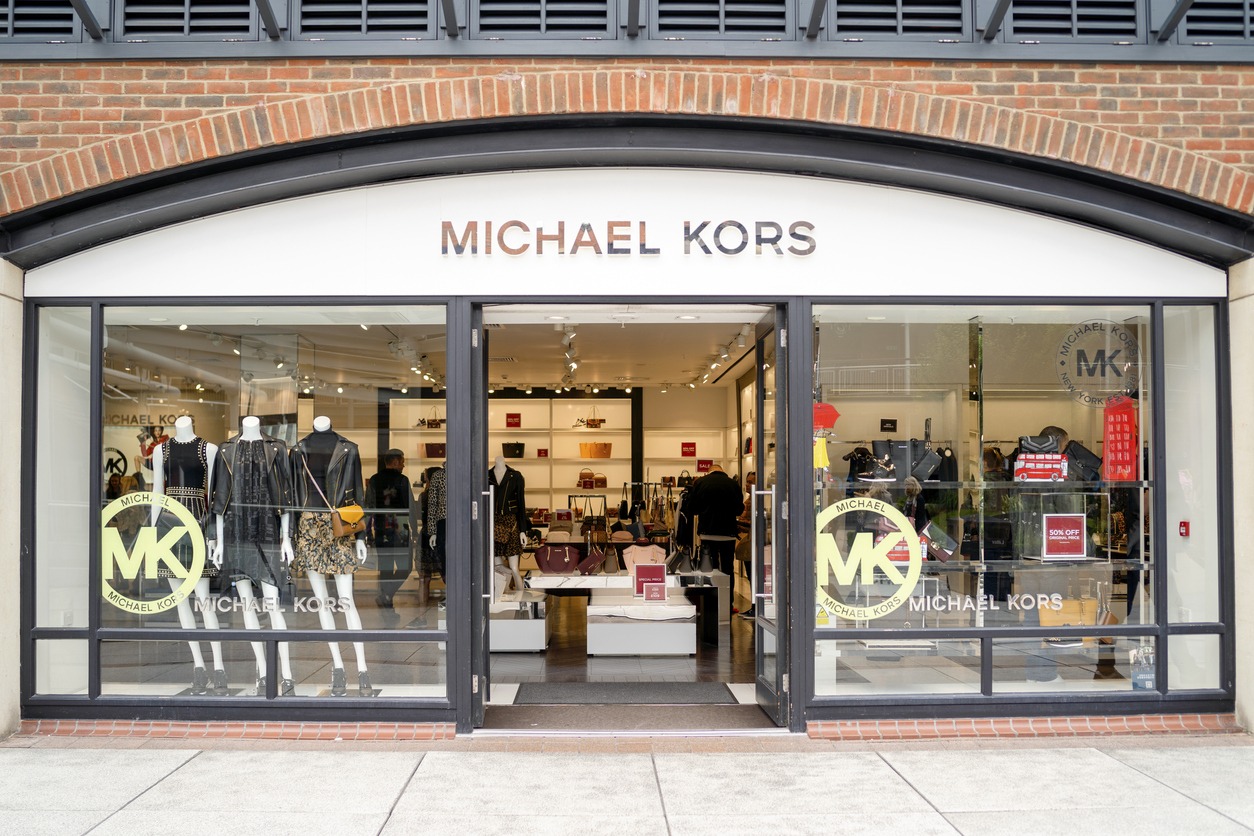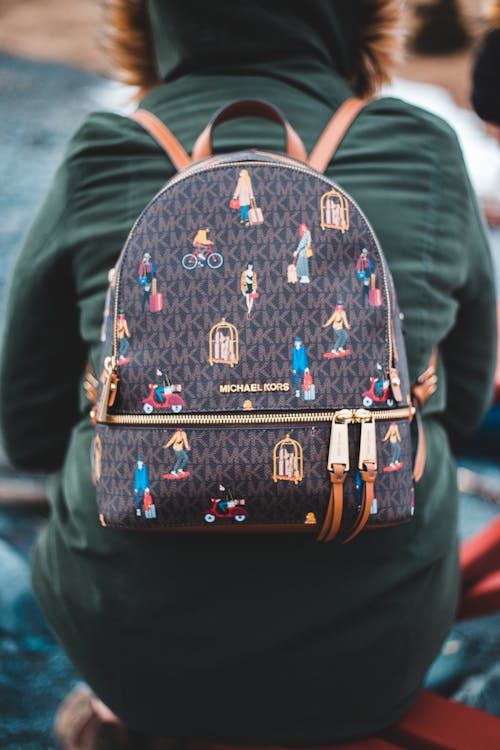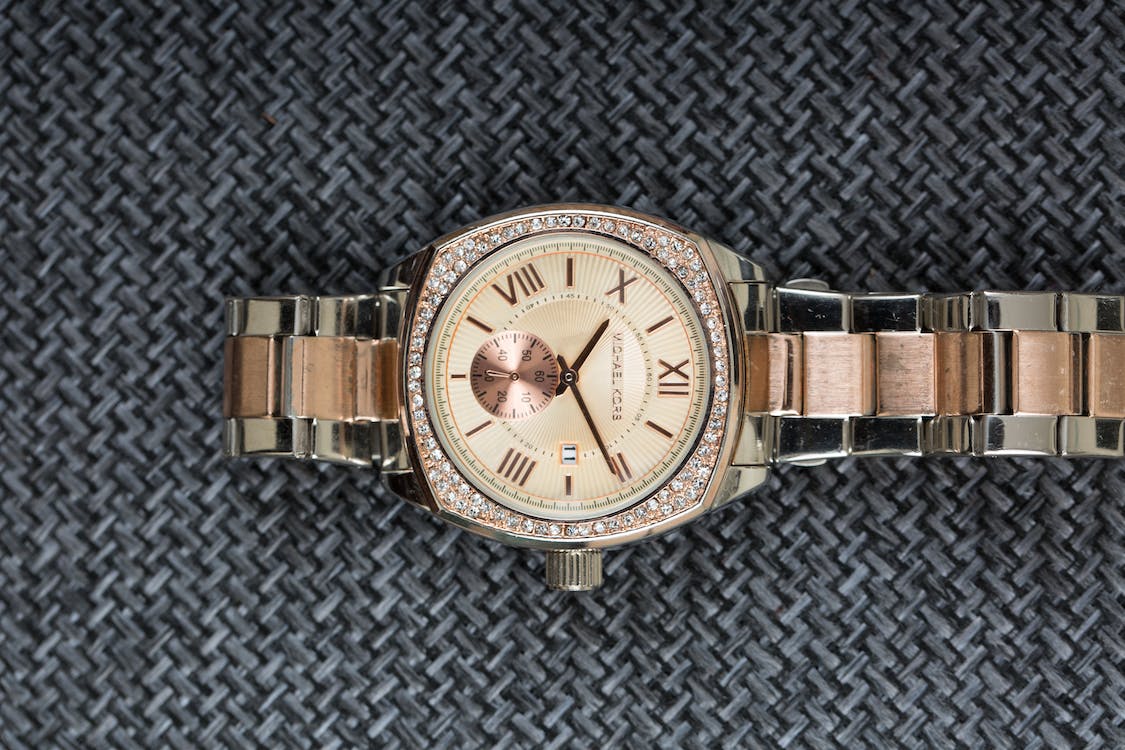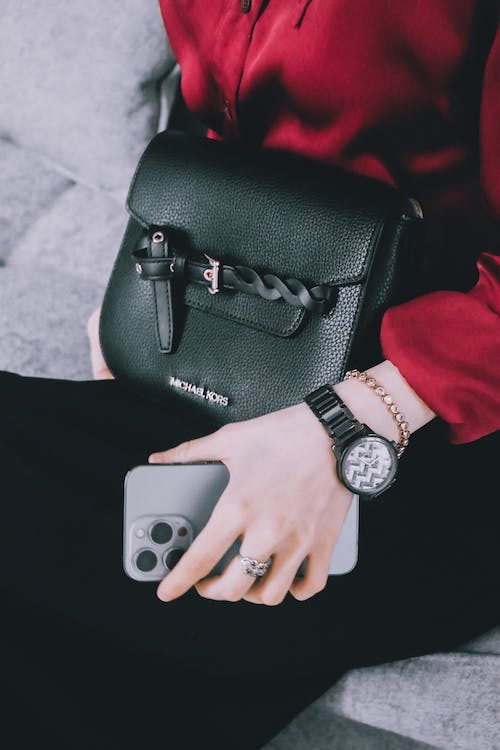Michael Kors, a name synonymous with luxury fashion and high-end accessories, has a fascinating history of ownership and brand evolution. In this blog post, we’ll delve into the details of who owns Michael Kors, tracing its journey from its inception to its current status under a new parent company.
The Beginnings of Michael Kors
Michael Kors, the brand, was born in 1981, springing from the vision of its founder and namesake, Michael Kors. Focused initially on women’s wear, the brand was an immediate standout for its sophisticated approach to American sportswear, characterized by a blend of casual chic and luxurious elegance. The aesthetic was tailored to the modern woman who valued both style and practicality, encapsulated by the term ‘jet-set’—a reference to the glamorous lifestyle of international travel and leisure.
In these formative years, Michael Kors’ designs were distinguished by their timeless elegance, with a particular emphasis on wearable, yet fashionable pieces. This period was crucial for laying the foundation of the brand, with Michael Kors’ personal involvement ensuring a cohesive vision and direction. The expansion into men’s wear, accessories, footwear, and fragrances over the years was a testament to the brand’s evolving scope, gradually shaping Michael Kors into a comprehensive lifestyle brand with a global appeal.
Going Public and Expansion
The 2000s were a period of significant growth for Michael Kors, culminating in the brand’s decision to go public in December 2011. The Initial Public Offering (IPO) was a strategic move aimed at capitalizing on the brand’s burgeoning popularity and securing the financial backing necessary for further expansion. This move was not just about raising capital; it was about making a statement in the fashion industry and signaling the brand’s ambitions for global dominance.
The IPO was met with enthusiasm from investors, reflecting the brand’s strong market position and potential for future growth. With the influx of capital, Michael Kors embarked on a strategic expansion, opening new stores across the globe and entering new markets. This era was marked by a broadening of the brand’s product range and a deeper penetration into existing markets, solidifying Michael Kors’ status as a key player in the luxury fashion segment.
Challenges and Strategic Shifts
In response to the challenges of market saturation and brand dilution, Michael Kors implemented a series of decisive strategic shifts aimed at reclaiming its luxury status and strengthening its market position. The brand meticulously reevaluated its retail strategy, opting for a more selective approach to store locations and appearances, ensuring that each store reflected the brand’s premium ethos and catered to the right demographic. This was coupled with a deliberate reduction in the number of promotions and sales, a move designed to reassert the brand’s value proposition and wean consumers off the expectation of constant discounts, thus preserving the brand’s pricing integrity and perceived value.
Simultaneously, Michael Kors placed a renewed emphasis on product innovation and quality, elevating its offerings to align more closely with luxury standards. The introduction of higher-end collections and limited-edition items, alongside an investment in superior materials and craftsmanship, served to differentiate the brand in a crowded marketplace. This strategic pivot not only addressed immediate concerns of brand dilution but also laid the groundwork for sustainable growth, positioning Michael Kors to better meet the evolving desires of the luxury consumer and navigate the complex dynamics of the global fashion industry.
Acquisition by Capri Holdings
In 2018, a landmark event reshaped the future of Michael Kors—its parent company, then known as Michael Kors Holdings Limited, announced the acquisition of the legendary fashion house Versace for $2.1 billion. This move was more than an expansion of the brand’s portfolio; it was a strategic pivot that led to the creation of Capri Holdings Limited, a new entity aimed at competing in the global luxury fashion arena.
The formation of Capri Holdings marked a significant shift in strategy. By bringing together Michael Kors, Versace, and later Jimmy Choo, Capri Holdings aimed to leverage the strengths of each brand to create a diversified portfolio of luxury fashion brands, each with its distinct identity and market positioning. This conglomerate approach allowed for shared resources in areas like manufacturing, distribution, and marketing, enhancing the efficiency and global reach of each brand while maintaining their unique brand identities.
The Role of Capri Holdings
Under the aegis of Capri Holdings, Michael Kors entered a new phase of growth and innovation. Capri Holdings has played a pivotal role in defining the strategic direction for Michael Kors, providing not only the financial resources but also the global infrastructure necessary for the brand to expand and evolve in the competitive landscape of luxury fashion.
With the support of Capri Holdings, Michael Kors has continued to innovate in its design approach, embracing new technologies and trends to stay relevant in a fast-changing industry. The brand has also expanded its digital footprint, enhancing its online presence to reach a wider audience and adapt to the growing trend of online shopping. Moreover, Capri Holdings’ global network has facilitated Michael Kors’ expansion into new markets, particularly in Asia and the Middle East, where the appetite for luxury fashion continues to grow.
The involvement of Capri Holdings has been instrumental in enabling Michael Kors to navigate the challenges of the luxury market, from the need for constant innovation to the pressures of sustainability and ethical fashion. With the backing of a strong parent company, Michael Kors is well-positioned to continue its journey as a leading name in luxury fashion, staying true to its heritage while embracing new opportunities and challenges.
Innovations in Sustainability and Social Responsibility
Eco-Friendly Practices and Materials
- Sourcing and Utilization of Sustainable Materials: Michael Kors has made significant strides in integrating eco-friendly materials into its collections, emphasizing the importance of sustainability in luxury fashion. By sourcing organic fabrics that require less water and fewer chemicals, as well as recycled materials that help reduce landfill waste, the brand is actively working to minimize its ecological footprint. This commitment extends beyond just the raw materials to include eco-conscious packaging and shipping methods, aligning with global sustainability goals.
- Energy Efficiency and Waste Reduction: In its pursuit of sustainability, Michael Kors has implemented initiatives to enhance energy efficiency across its operations, from manufacturing to retail outlets. This includes adopting renewable energy sources where possible, utilizing energy-efficient lighting and climate control systems, and employing practices that reduce resource consumption. Waste reduction efforts are also a key focus, with the brand employing strategies such as recycling programs, minimizing production excess, and encouraging circular fashion practices among consumers to extend the lifecycle of products.
Social Impact and Community Engagement
- Supporting Charitable Causes: Michael Kors has established itself as a socially responsible entity by actively supporting various charitable causes and organizations. This involves direct donations, fundraising events, and awareness campaigns that cover a broad spectrum of social issues, including hunger, health care, disaster relief, and education. The brand’s philanthropic efforts not only contribute to immediate aid but also aim to foster long-term societal improvements.
- Advancements in Labor Practices and Inclusivity: Recognizing the importance of ethical labor practices, Michael Kors is committed to ensuring fair working conditions, equitable pay, and safety standards across its supply chain. This commitment is reflected in stringent vendor policies, regular audits, and transparent reporting to stakeholders. Additionally, the brand places a strong emphasis on diversity and inclusion, not just within its workforce but also in its marketing campaigns, product offerings, and leadership structures. This approach reflects a broader vision to create an inclusive environment that celebrates diversity and promotes equality.
Embracing the Digital Frontier
Enhancing E-commerce and Digital Platforms
- E-commerce Optimization: The Michael Kors e-commerce platform has undergone significant enhancements to cater to the modern consumer’s expectations for a seamless online shopping experience. These improvements focus on intuitive design, ensuring that the website is not only aesthetically pleasing but also easy to navigate. Personalization algorithms have been integrated to offer product recommendations based on the user’s browsing history and purchase patterns, aiming to replicate the personalized service found in physical stores. Social media integration allows users to easily share their favorite products with their networks, further blurring the lines between e-commerce and social engagement.
- Innovations in Customer Engagement: Michael Kors leverages various digital platforms to create engaging content that resonates with its audience. This includes interactive online events, behind-the-scenes looks at fashion shows, and exclusive online previews of new collections. The brand effectively uses social media channels to engage in two-way conversations with consumers, gathering feedback and fostering a sense of community. Augmented reality (AR) and virtual try-on features have also been explored to enhance the digital shopping experience, allowing customers to visualize products more realistically.
Leveraging Technology for Growth
- Digital Marketing and Social Media Strategies: Michael Kors has embraced a digital-first approach in its marketing strategies, recognizing the power of social media and digital influencers in shaping consumer preferences. Collaborations with fashion influencers, celebrities, and style icons are strategically utilized to amplify the brand’s reach and appeal to a broader audience. These partnerships often result in highly engaging content that is shared across various platforms, increasing visibility and driving consumer interest. The brand also leverages targeted advertising and data-driven marketing campaigns to reach potential customers more effectively.
- Adoption of Advanced Technologies: The integration of advanced technologies such as AI and data analytics has been a game-changer for Michael Kors in understanding and predicting consumer behavior. AI-driven insights help the brand to tailor its offerings and marketing messages to individual preferences, enhancing customer satisfaction and loyalty. Data analytics are used to optimize the supply chain, from inventory management to demand forecasting, ensuring that the brand can respond quickly to market trends. These technologies also support innovation in product development, enabling Michael Kors to stay ahead of fashion trends and meet the evolving needs of its customers.
Global Market Expansion and Localization Strategies
As part of its long-term growth strategy under Capri Holdings, Michael Kors has been actively pursuing global market expansion, with a keen focus on emerging economies and high-growth regions such as Asia-Pacific, the Middle East, and Latin America. This expansion is not just about increasing the number of stores but also about tailoring the brand’s offerings and marketing strategies to resonate with local tastes, cultures, and consumer behaviors.
Localization strategies have been pivotal in this context. Michael Kors has invested in understanding local market dynamics, consumer preferences, and fashion sensibilities, which has informed its product lines, marketing campaigns, and store experiences in different regions. For instance, in China, one of the fastest-growing luxury markets, Michael Kors has embraced local festivals, celebrities, and digital platforms like WeChat and Tmall to engage with consumers, resulting in enhanced brand visibility and relevance.
Enhancing Customer Experience Through Omnichannel Presence
In today’s retail environment, the distinction between online and offline shopping is increasingly blurred, with consumers expecting a seamless and integrated shopping experience across all channels. Recognizing this shift, Michael Kors, under the guidance of Capri Holdings, has been enhancing its customer experience through a robust omnichannel presence.
This omnichannel strategy encompasses a harmonized approach to retail, e-commerce, mobile, and social platforms, ensuring that consumers receive a consistent and high-quality brand experience, whether they are shopping in a physical store, online, or through a mobile app. Features like “click-and-collect,” easy returns across channels, and personalized online recommendations based on in-store interactions are examples of how Michael Kors is creating a cohesive and customer-centric shopping journey.
Additionally, Michael Kors has leveraged technology to enhance in-store experiences, incorporating digital elements such as interactive displays, virtual try-ons, and personalized styling services. These innovations not only enhance customer engagement and satisfaction but also provide valuable data that informs inventory management, product development, and customer service improvements.
Conclusion
The ownership history of Michael Kors reflects a journey of strategic growth, brand evolution, and industry foresight. From its days as an independent brand led by a visionary designer to its current status under the ambitious Capri Holdings, Michael Kors has remained a staple in the luxury fashion scene. As the brand moves forward, its legacy of sophistication, innovation, and global appeal continues to be its guiding light, promising a future as bright and bold as its past.




